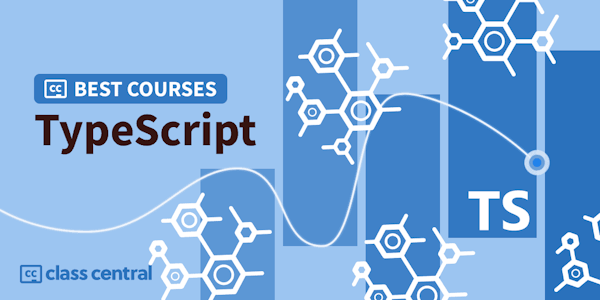TypeScript is a powerful tool that adds organization, clarity, and collaborative potential to web applications. Here you'll learn to install, configure, and debug TypeScript, as well as how to configure the compiler and use Type Declaration files.
When teams with diverse skillsets work on the same application, it can be challenging and time-consuming to coordinate interconnected code and to standardize styling. In this course, Configuring, Compiling, and Debugging TypeScript Projects, you’ll learn to create TypeScript projects from scratch to suit the needs of any project you are assigned to create, and to contribute intelligently to projects in which you take a junior role. First, you’ll explore scaffolding TypeScript projects and creating a reliable and easily customizable environment in which to write code. Next, you’ll discover how to streamline and encourage developer cooperation by adding type declarations, code linting (with ESLint), and project references. Finally, you’ll learn how to debug TypeScript with Chrome and VSCode, and configure the project to make it simple for anyone who is working on the project to do so as well. When you’re finished with this course, you’ll have the skills and knowledge of TypeScript needed to confidently take charge and architect any TypeScript project you are assigned to in an intelligent manner, or to work within any TypeScript team project in a professional and efficient manner.
When teams with diverse skillsets work on the same application, it can be challenging and time-consuming to coordinate interconnected code and to standardize styling. In this course, Configuring, Compiling, and Debugging TypeScript Projects, you’ll learn to create TypeScript projects from scratch to suit the needs of any project you are assigned to create, and to contribute intelligently to projects in which you take a junior role. First, you’ll explore scaffolding TypeScript projects and creating a reliable and easily customizable environment in which to write code. Next, you’ll discover how to streamline and encourage developer cooperation by adding type declarations, code linting (with ESLint), and project references. Finally, you’ll learn how to debug TypeScript with Chrome and VSCode, and configure the project to make it simple for anyone who is working on the project to do so as well. When you’re finished with this course, you’ll have the skills and knowledge of TypeScript needed to confidently take charge and architect any TypeScript project you are assigned to in an intelligent manner, or to work within any TypeScript team project in a professional and efficient manner.


